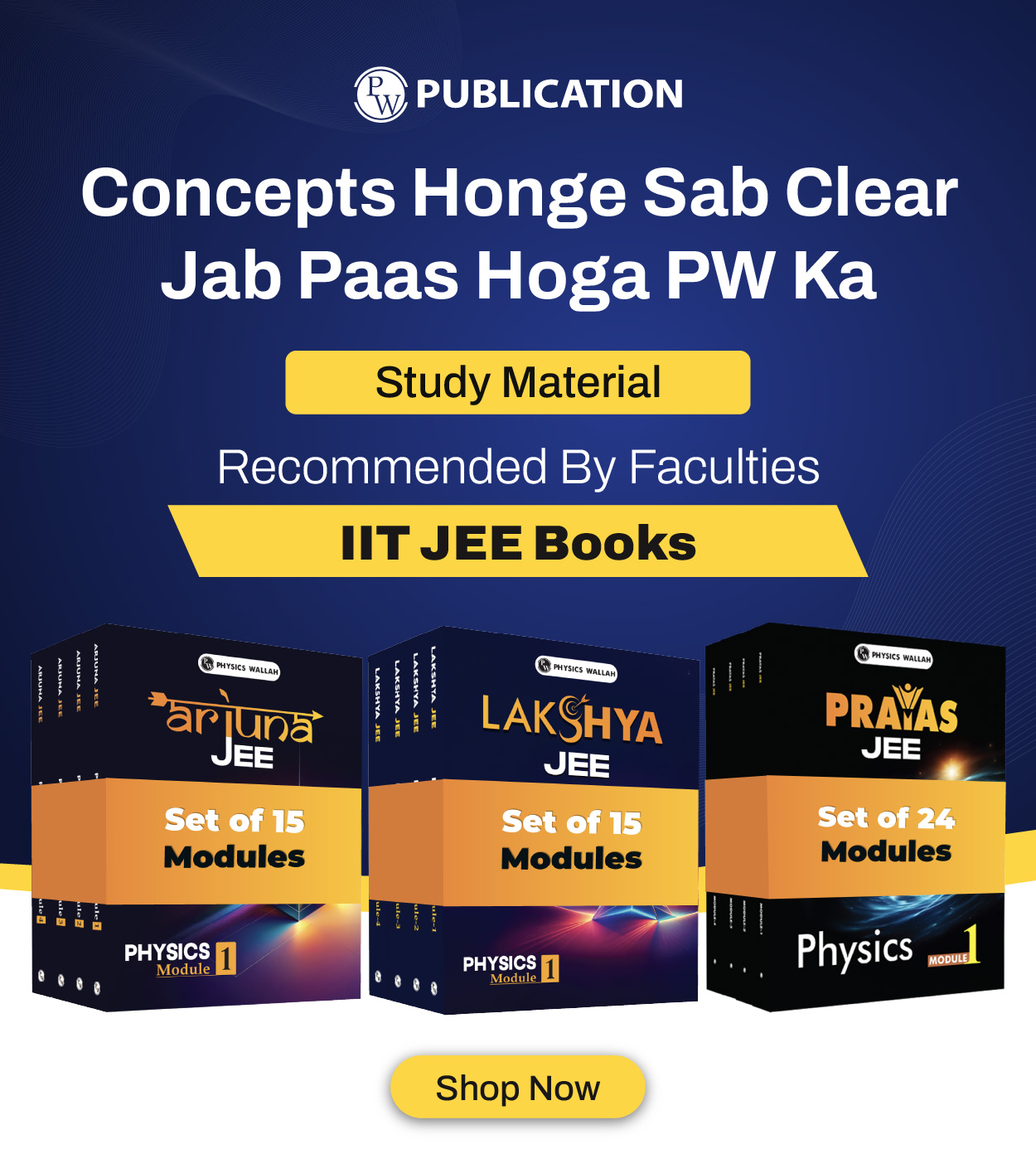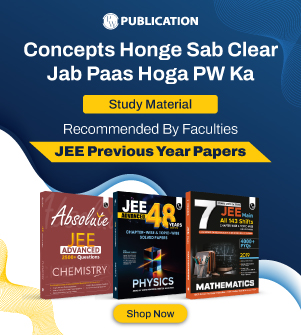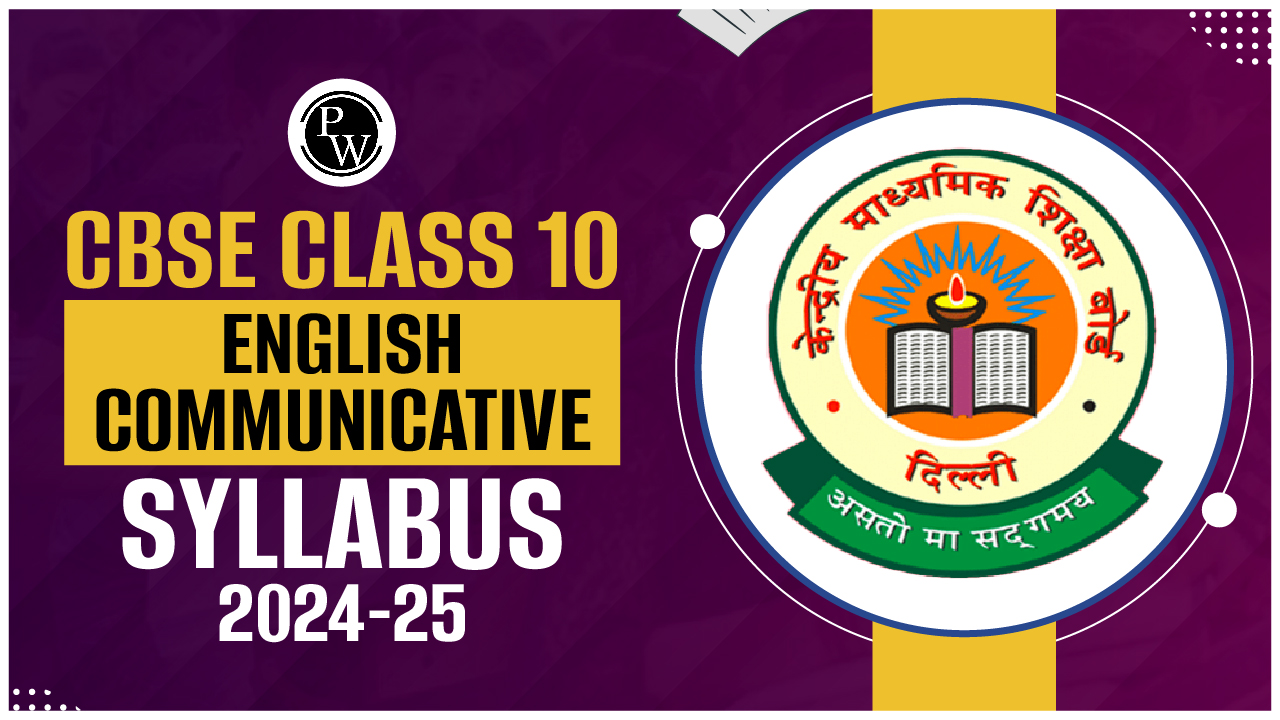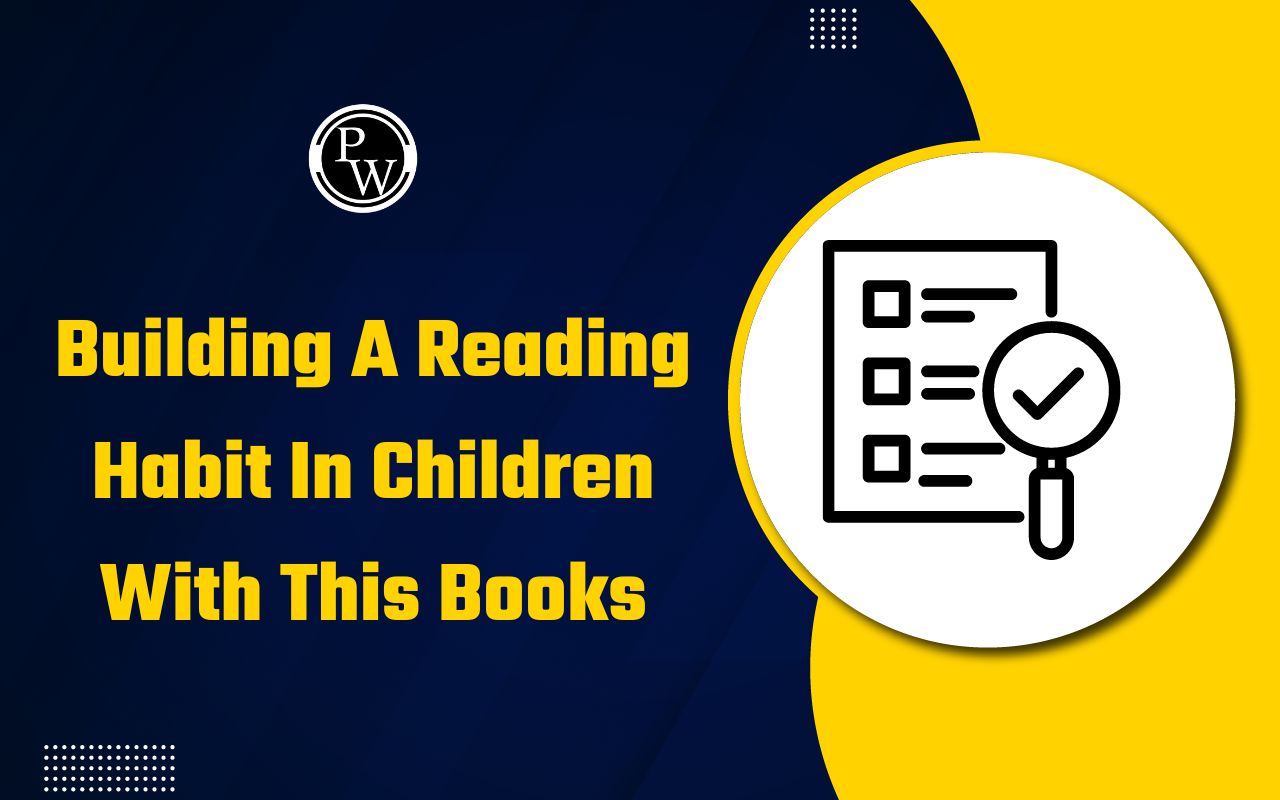BITSAT Syllabus for 2026 Exam - Physics, Chemistry, Mathematics
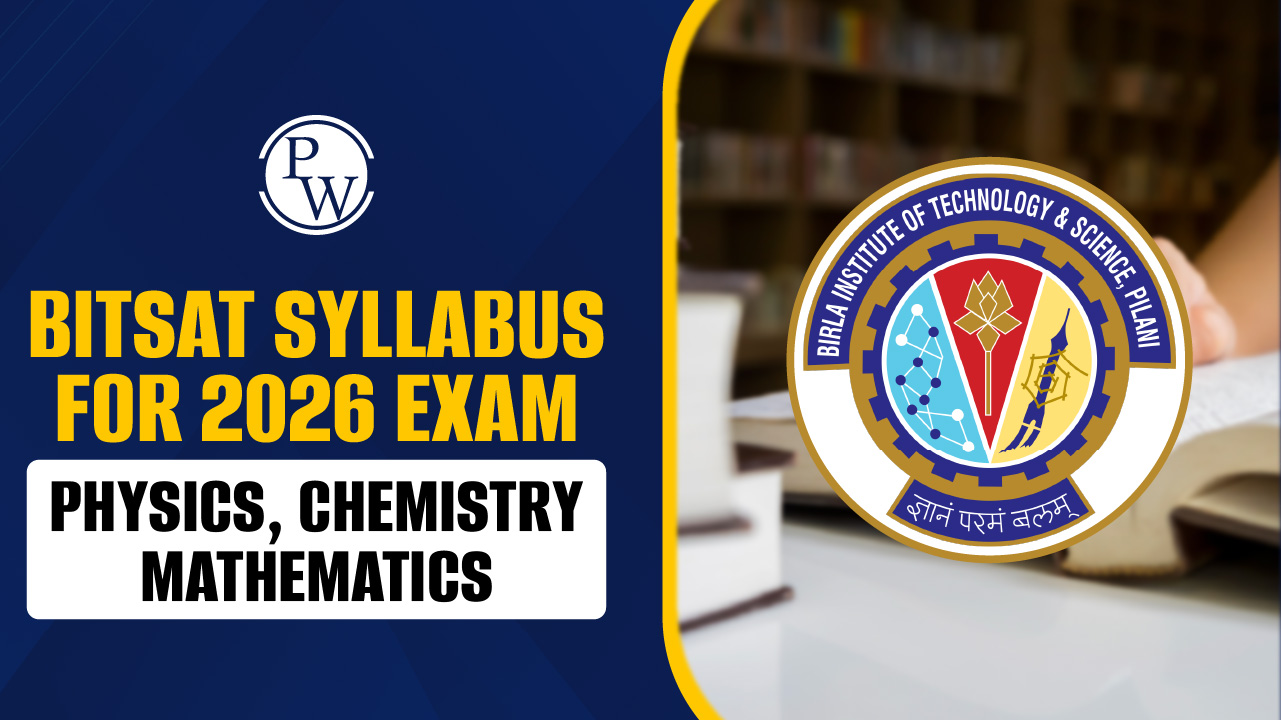
BITSAT Syllabus 2026 is mainly based on the NCERT syllabus of Classes 11 and 12. Aspirants preparing for this exam should carefully go through the topics and chapters from Physics, Chemistry, and Mathematics to know what to study. The questions in the exam are framed from these topics, so it is important to be familiar with the subject-wise BITSAT exam syllabus.
As per the BITSAT 2025 syllabus, the exam included questions from five areas: Physics, Chemistry, Mathematics or Biology (for BPharma), English Proficiency, and Logical Reasoning. Those applying for engineering courses must prepare according to the BITSAT maths syllabus, while those applying for pharmacy should focus on Biology. Along with the syllabus, applicants must also understand the BITSAT exam pattern to know the marks distribution and question types better.
Check Out - BITSAT PYQ
What is the BITSAT 2026 Exam?
The BITSAT 2026 exam is going to be conducted by the Birla Institute of Technology and Science (BITS) for admission into its campuses in Pilani, Goa, and Hyderabad. It is a university-level entrance exam held for aspirants who wish to take admission in B.E., B.Pharm, and other integrated courses.
-
BITSAT exam is expected to be held twice in the year 2026, giving students a second chance to improve their scores.
-
The application process will be done online, and the exam will also be conducted in online (computer-based) mode. The BITSAT exam duration will be 3 hours, and the paper will be available only in the English language.
-
As per the latest updates, the application fee is expected to be Rs. 3500, and all steps—from filling the form to counseling—will take place online. Students are advised to keep checking the official BITS admission website for the latest updates on dates, the official release of the BITSAT syllabus, and the exam pattern.
Check Out - JEE Books
BITSAT Syllabus for Physics
BITSAT syllabus for Physics covers all important concepts from Class 11 and 12 NCERT Physics. It includes both theory- and numerical-based topics, designed to test an applicant's understanding of basic principles and their application in real-life situations. To score well, students should be clear with formulas, definitions, and problem-solving techniques.
BITSAT exam syllabus for Physics includes a wide range of topics such as Mechanics, Heat, Waves, Electrostatics, Optics, and Modern Physics. Understanding the chapter-wise structure helps students prepare effectively by focusing on tough topics first.
|
Topic-Wise BITSAT 2026 Physics Syllabus |
|
|
Topics |
Sub-Topics Covered |
|
Electromagnetic Induction |
Faraday’s law, Lenz’s law, eddy currents, self and mutual inductance, transformers, generators, AC (peak and RMS values), LCR circuits |
|
Optics |
Laws of reflection and refraction, lenses and mirrors, optical instruments (telescope, microscope), interference (Huygen’s principle, Young’s double slit), thin film interference, diffraction (single slit), electromagnetic waves and spectrum (qualitative), polarisation (states, Malus’ law, Brewster’s law) |
|
Units & Measurement |
Different systems of units, SI units, derived units, dimensional analysis, significant figures, Vernier callipers, screw gauge, physical balance |
|
Electrostatics |
Coulomb’s law, electric fields (discrete and continuous), electrostatic potential and energy, Gauss’s law, electric dipole, capacitance and dielectrics, parallel plate capacitor, series and parallel capacitors |
|
Current Electricity |
Ohm’s law, Joule heating, DC circuits, resistors and cells, Kirchhoff’s laws, potentiometer, Wheatstone bridge, resistivity and its temperature dependence |
|
Kinematics |
Properties of vectors, position, velocity, acceleration vectors, motion with constant acceleration, projectile motion, circular and relative motion |
|
Newton’s Laws of Motion |
Newton’s laws, free body diagrams, resolution of forces, motion on inclined planes, pulley systems, centripetal force, inertial and non-inertial frames |
|
Impulse and Momentum |
Impulse and momentum definitions, conservation of momentum, collisions, momentum of a system, centre of mass |
|
Work and Energy |
Work done by force, kinetic energy, work-energy theorem, power, conservative forces, potential energy, conservation of mechanical energy |
|
Rotational Motion |
Angular displacement, velocity, acceleration, rotation with constant angular acceleration, moment of inertia, parallel and perpendicular axes theorems, torque, angular momentum, conservation laws, rolling motion |
|
Gravitation |
Newton’s law, gravitational potential energy, escape velocity, Kepler’s laws, satellite motion |
|
Modern Physics |
Dual nature of light and matter, photoelectric effect, de Broglie wavelength, Rutherford’s model, Bohr’s model, hydrogen atom spectrum, radioactivity, nuclear fission and fusion, binding energy |
|
Electronic Devices |
Energy bands, conductors, insulators, semiconductors, diode (IV characteristics), rectifier, LED, photodiode, solar cell, Zener diode (voltage regulation), junction transistor, transistor as amplifier (CE) and oscillator, logic gates (OR, AND, NOT, NAND, NOR), transistor as a switch |
|
Mechanics of Solids and Fluids |
Elasticity, pressure, density, Archimedes’ principle, viscosity, surface tension, Bernoulli’s theorem |
|
Oscillations |
SHM, spring-mass system, pendulums, forced and damped oscillations, resonance |
|
Waves |
Progressive waves, standing waves in strings and pipes, beats, superposition of waves, Doppler Effect |
|
Heat and Thermodynamics |
Kinetic theory of gases, thermal equilibrium, temperature, specific heat, conduction, convection, radiation, thermal conductivity, Newton’s law of cooling, first and second laws of thermodynamics, Carnot engine, efficiency and COP |
|
Magnetic Effect of Current |
Biot-Savart’s law, Ampere’s law, Lorentz force, force on conductors, magnetic moment, torque on current loops, galvanometer to voltmeter and ammeter conversion |
BITSAT Maths Syllabus 2026
BITSAT maths syllabus for 2026 is based on topics from NCERT books of 10+2 Mathematics. It covers everything from Algebra and Trigonometry to Calculus, Geometry, and Probability. Since Maths carries a lot of weightage in the exam, students should prepare each topic well and understand all formulas and concepts clearly.
BITSAT exam syllabus for Maths is not just about solving equations; it also focuses on logical thinking, problem-solving, and application-based understanding. Here's the complete list of chapters students need to study under the BITSAT Maths syllabus:
|
Topic-Wise BITSAT Maths Syllabus 2026 |
|
|
Main Topics |
Sub-Topics Included |
|
Algebra |
Complex numbers, quadratic equations, progressions (AP, GP, AGP), exponential series, logarithms, binomial theorem, permutations and combinations, sets, relations and functions, types of matrices, determinants, linear equations, mathematical induction, linear inequalities, mathematical reasoning |
|
Trigonometry |
Measurement of angles (degrees & radians), trigonometric identities, equations, inverse trigonometric functions, graphs of trigonometric functions |
|
Two-Dimensional Geometry |
Cartesian coordinates, distance, section formula, straight lines, pair of lines, angle between lines, bisectors, circles, parametric form, parabola, ellipse, hyperbola |
|
Three-Dimensional Geometry |
Coordinate planes and axes, distance between points, direction ratios and cosines, equation of a line and plane, angle between lines and planes, shortest distance, coplanarity |
|
Differential Calculus |
Domain and range, limits, continuity, differentiability, derivatives of different functions (polynomial, trigonometric, exponential, etc.), chain rule, tangents and normals, increasing/decreasing functions, maxima and minima, Rolle’s and Mean Value Theorems |
|
Integral Calculus |
Indefinite integrals, standard formulas, integration by parts, substitution, partial fractions, trigonometric identities, definite integrals and properties, area under curves |
|
Ordinary Differential Equations |
Order and degree, forming differential equations, solving first-order and first-degree equations (separable, homogeneous, linear) |
|
Probability |
Basics of probability, addition and multiplication rules, conditional probability, Bayes' theorem, independent events, discrete random variables, mean and variance |
|
Vectors |
Direction ratios/cosines, vector addition, scalar multiplication, position vectors, dot and cross product, scalar triple product |
|
Statistics |
Measures of dispersion, frequency distribution, comparing variances |
|
Linear Programming |
Formulation of LPP, graphical method, feasible region and solution, optimal solutions (up to 3 constraints) |
|
Mathematical Modelling |
Real-life problem solving using matrices, calculus, and linear programming |
Check Out - JEE Previous Year Papers
BITSAT Exam Syllabus for Chemistry 2026
BITSAT exam syllabus for Chemistry includes both Physical and Organic Chemistry, along with Inorganic, Environmental, and Applied Chemistry concepts from NCERT books for classes 11 and 12. Students preparing for BITSAT 2026 should make sure they understand each topic well, as the exam checks not just memory but also how well they can apply the concepts in solving problems.
BITSAT 2025 syllabus for Chemistry covered theoretical concepts, equations, reactions, practical-based knowledge, and real-life applications. From atomic structure to polymers and environmental chemistry, all major areas of chemistry are covered to test students' basics as well as problem-solving skills.
|
Topic wise BITSAT Exam Syllabus for Chemistry |
|
|
Main Topics |
Sub-Topics |
|
Electrochemistry |
Redox reactions, electrochemical cells, electrode potentials, Nernst equation, batteries, electrolysis, Faraday’s laws, conductance, corrosion |
|
Chemical Kinetics |
Rate of reaction, order and molecularity, half-life, effect of temperature and concentration, collision theory, activation energy |
|
States of Matter |
Laws of chemical combination, mole concept, states of matter, gas laws, ideal gas equation, liquefaction of gases, van der Waals equation, vapour pressure, surface tension, viscosity, solid-state classification, unit cell, density, crystal structures, defects, band theory |
|
Atomic Structure |
Subatomic particles, atomic models, hydrogen spectrum, Bohr's model, quantum numbers, orbitals, electronic configuration, periodic table trends |
|
Chemical Bonding & Molecular Structure |
Ionic and covalent bonds, Lewis structures, VSEPR theory, hybridization, molecular orbital theory, bond parameters, dipole moment, hydrogen bonding |
|
Thermodynamics |
System and surroundings, first law, enthalpy changes, Hess’s law, second and third law, Gibbs free energy, spontaneity, work and heat |
|
Physical and Chemical Equilibria |
Solutions and concentration units, Raoult’s law, colligative properties, equilibrium constant, Le Chatelier’s principle, acids and bases, solubility product, buffer, pH, ionic equilibria |
|
Surface Chemistry |
Adsorption, catalysis, colloids, emulsions, Tyndall effect, Brownian motion, electrophoresis, properties of colloids |
|
Principles of Organic Chemistry & Hydrocarbons |
Functional groups, types of reactions, alkanes, alkenes, alkynes, aromatic compounds, haloalkanes and haloarenes, reaction mechanisms |
|
Stereochemistry |
Isomerism, conformations of ethane, geometrical isomerism in alkenes |
|
Organic Compounds with Functional Groups |
Alcohols, phenols, ethers, aldehydes, ketones, carboxylic acids, amines, diazonium salts, cyanides, reaction mechanisms, preparation and uses |
|
Hydrogen and s-block Elements |
Properties and uses of hydrogen, heavy water, hydrogen peroxide, alkali and alkaline earth metals, important compounds like NaOH, CaCO₃, and their uses |
|
p, d, and f-block Elements |
Properties of elements in groups 13-18, uses of compounds, preparation of industrial chemicals, transition metals, lanthanides and actinides, coordination compounds |
|
Biological, Industrial & Environmental Chemistry |
Carbohydrates, proteins, vitamins, nucleic acids, hormones, polymers, pollution, green chemistry, chemistry in medicines and food |
|
Theoretical Principles of Experimental Chemistry |
Volumetric analysis, qualitative and quantitative analysis, purification methods, organic preparations, chromatography, basic lab techniques, physical chemistry experiments |
BITSAT Exam Pattern 2026
Understanding the BITSAT exam pattern for 2026 helps students plan better, manage their time wisely, and avoid losing marks due to negative marking. Find out the detailed BITSAT Exam Pattern 2026 (expected) here:
Exam Mode and Duration
-
BITSAT 2026 exam will be conducted in online mode (computer-based test) and will be 3 hours long.
-
It will be held only in English. The question paper will have 130 multiple-choice questions (MCQs). These questions will come from Physics, Chemistry, Mathematics or Biology, English Proficiency, and Logical Reasoning.
Question Paper Structure
-
The question paper is divided into four parts. Part I includes questions from Physics, Part II from Chemistry, Part III includes both English Proficiency and Logical Reasoning, and Part IV will have Mathematics or Biology, depending on the course a student is applying for. Engineering applicants must attempt Mathematics.
Marking Scheme
-
Each question will have four answer choices, and only one of them will be correct. For every correct answer, students will get 3 marks. If the answer is wrong, 1 mark will be deducted. No marks are given or deducted for skipped questions.
Option of Extra Questions
-
One special feature of the BITSAT exam pattern is the option of extra questions. If a student attempts all 130 questions before time runs out, they will get a chance to answer 12 extra questions.
-
These will come from Physics, Chemistry, Mathematics/Biology, and Logical Reasoning (3 questions from each subject).
-
However, once the extra questions begin, the student will not be allowed to go back and change any of their answers from the original 130 questions.
Section Flexibility
-
There is no separate time limit for each section of the paper. Test takers can move freely between questions and review or change their answers anytime within the total 3-hour window.
-
This flexible pattern allows students to plan their strategy and attempt questions as per their strengths.
BITSAT Books 2026
Getting ready for BITSAT 2026 isn’t just about covering the syllabus—it’s about learning the right way. Since the exam is based on topics from Classes 11 and 12 in Physics, Chemistry, and Mathematics, students need books that explain concepts in a simple manner and also help them build speed and accuracy.
One of the smartest ways to prepare is by solving actual BITSAT questions from previous years. It gives students a good idea of what to expect and helps them focus on the topics that really matter. A book that has all the past years' questions together with easy, step-by-step solutions can be a great help during revision. Check out the BITSAT Study Material below:
|
BITSAT Exam Preparation Book |
|
|
BITSAT PYQ |
|
Subject-Wise BITSAT Exam Preparation Tips 2026
Preparing for the BITSAT 2026 exam becomes easier when students know what to focus on in each subject. Here are some subject-specific tips that can help boost aspirants' preparation:
For Physics:
-
Focus more on conceptual clarity than just formulas. Start with Mechanics and Thermodynamics, as they form the base for other chapters.
-
Practice diagrams and numerical questions regularly.
-
For Optics and Electromagnetism, revise key formulas and solve standard application-based problems.
-
Don't skip Modern Physics, as it often has direct, fact-based questions that are easy to score.
For Chemistry:
-
Aspirants must divide their time wisely between Physical, Organic, and Inorganic Chemistry.
-
For Physical Chemistry, practice numerical problems based on concepts like thermodynamics, chemical bonding, and equilibrium.
-
Inorganic Chemistry requires strong memory, so revise NCERT-based facts and chemical reactions regularly.
-
In Organic Chemistry, focus on reaction mechanisms, functional groups, and name reactions. Also, brush up on Environmental Chemistry topics for bonus marks.
For Mathematics:
-
BITSAT maths syllabus includes a wide range of topics, so keep practicing every day.
-
Give extra time to Algebra and Calculus, as they carry high weightage and involve tricky calculations.
-
Learn formulas thoroughly in Coordinate Geometry and practice graphs for better understanding.
-
In Trigonometry, focus on identities and equation solving. For Probability and Statistics, revise standard methods and practice application-based sums to improve speed.
For English Proficiency:
-
To score well in this section, build a strong vocabulary. Learn new words, their meanings, and their usage.
-
Practice grammar questions like spotting errors and sentence correction.
-
For Reading Comprehension, read short passages and try answering quickly while understanding the main idea and tone. The more applicants read, the better their performance in the exam.
For Logical Reasoning:
-
Practice is important to mastering logical reasoning. Solve questions based on patterns, number series, blood relations, direction sense, and syllogisms regularly.
-
Try solving puzzles and brain teasers to strengthen analytical thinking. Do not rush because accuracy is more important in this section than speed.
BITSAT Syllabus for 2026 Exam FAQs
Q.1. When will the BITSAT 2026 exam be conducted?
Ans. The BITSAT 2026 exam is expected to be held in two sessions: one in May 2026 and the second in June 2026. The official schedule will be announced on the BITS admission website.
Q.2. What is the BITSAT exam syllabus?
Ans. The BITSAT exam syllabus includes topics from Class 11 and 12 NCERT books. Subjects include Physics, Chemistry, Mathematics or Biology, English Proficiency, and Logical Reasoning.
Q.3. Are NCERT books from 11th and 12th classes sufficient for BITSAT 2026?
Ans. NCERT books are very helpful and should be the first priority of those preparing for the BITSAT exam. It is also important to solve extra questions and practice mock tests based on the BITSAT exam syllabus.
Q.4. What is the BITSAT exam pattern?
Ans. BITSAT 2026 is a computer-based test of 3 hours covering Physics, Chemistry, English Proficiency & Logical Reasoning, and Mathematics/Biology. The paper has 130 questions in total, and each correct answer carries 3 marks, while 1 mark is deducted for a wrong answer.



